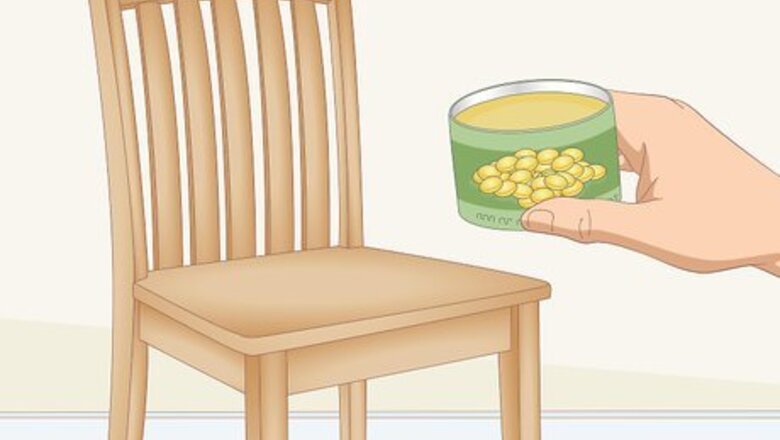
views
Selecting a Wax
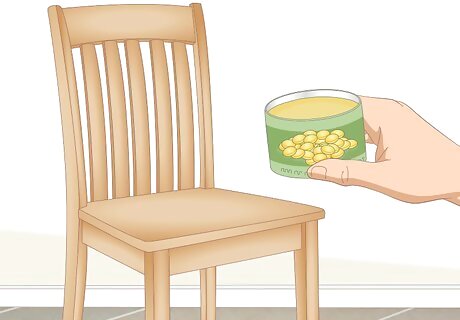
Choose beeswax for a soft, natural finish. If you'd like a wax that doesn't contain synthetic additives, buy a container of beeswax furniture polish. This polish is easy to apply and it will give your furniture a soft glow. Keep in mind that because it's such a soft wax, it won't protect your furniture as much as other polishes and it will be sticky unless you buff it well. You might find products that contain a mixture of beeswax and carnauba wax, which make the polish more durable.
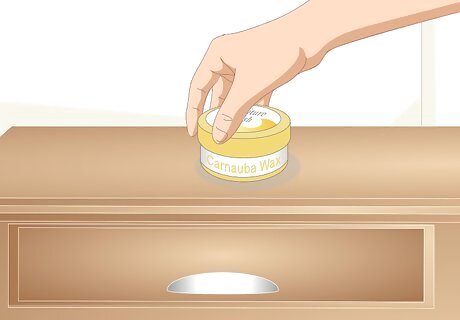
Look for a product with carnauba wax for a long-lasting finish. Carnauba is a popular vegetable wax that's added to furniture polishes because it buffs to a high shine. It also lasts longer than beeswax alone.Did You Know: You might see furniture oils that are a combination of carnauba wax with mineral oil. While these are easy to apply, they won't provide long-lasting coverage like a beeswax or carnauba polish.
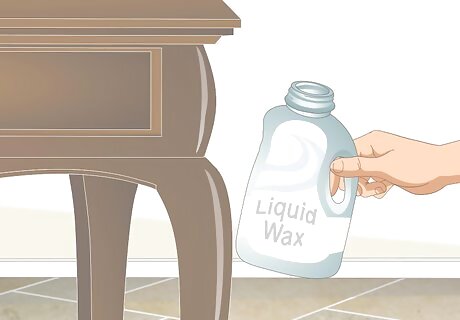
Use liquid wax on heavily carved or ornate furniture. Liquid wax doesn't contain as much wax as paste wax, so it won't last as long. Choose liquid wax if you'd like to coat furniture with lots of decorative carvings, which would be difficult to work a paste wax into. For example, select liquid wax for intricately carved chair or table legs.
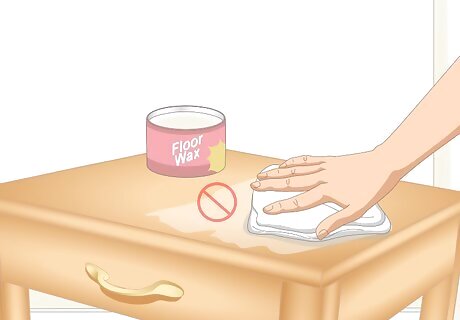
Avoid using floor wax on furniture. Most commercial floor waxes contain less wax so they're easier to spread across an entire floor. Since this wax is also softer, it won't last on furniture as long as a furniture wax. If you do use a floor wax, you'll probably need to reapply the wax every few months instead of once or twice a year.
Applying the Wax
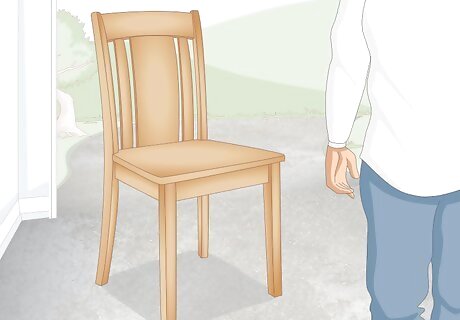
Work in a clean space so you don't kick up dust. Find a well-ventilated area to wax the furniture and ensure that it's not dusty. You might want to use a clean workroom instead of a woodworking room that contains a lot of sawdust. Open a window to ventilate the room. This also helps your furniture dry faster.
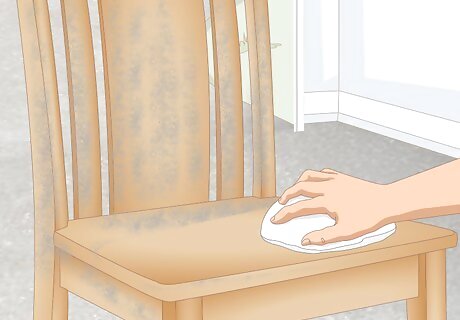
Clean surface with a soft and damp cloth to remove dust. Whether you're waxing painted or unfinished furniture, start with a clean surface. Take a clean, damp cloth and wipe over the surface of the furniture to remove all dust and dirt. This prevents dust from appearing in the wax finish. Use lint-free cloths or cloths that don't have loose edges. This prevents fibers from getting into the wax.
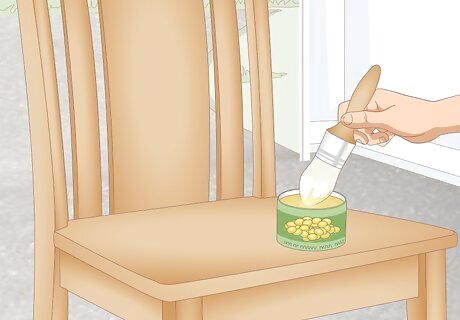
Dip a wax brush or clean cloth into the wax. If you don't like getting your hands messy, take a stiff wax brush that has flat bristles and rub it into the wax to evenly coat the bottom of the bristles. Scoop a coin-sized amount of wax onto the cloth. Ensure that there aren't loose threads on the cloth that could release fibers into the wax. You could also use a soft cloth or rag if you don't mind getting a little wax on your hands.
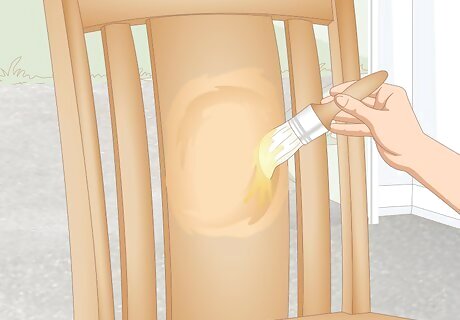
Rub a thin layer of wax into the furniture using circular motions. Gently work the wax across the entire surface of the furniture starting from 1 side and working towards the opposite side. Using small, circular movements prevents streaks. Keep dabbing the cloth or brush into the wax every few swipes so you're applying more wax instead of lifting it off.Tip: Although you can cover furniture that's been varnished, lacquered, or painted, it's difficult to apply wax to latex-painted furniture. This is because a latex surface isn't porous and it won't absorb the wax. It's better to apply several small, thin layers of wax rather than a thick coat, which would dry dull and hazy. If you see ridges of wax on the furniture, you've applied too much wax and you'll need to buff it off. Try to apply the wax gradually as you go.
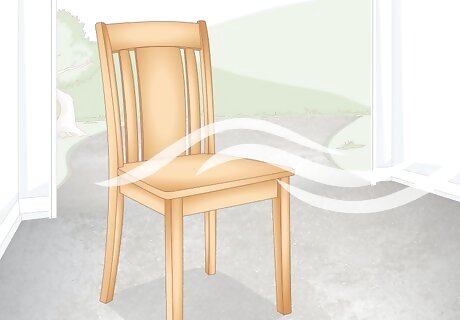
Let the furniture dry according to the manufacturer's instructions. Most furniture waxes dry within minutes, but you might be advised to wait up to 30 minutes for the wax to dry. The wax will turn from shiny to dull as it dries. It might take longer for the wax to dry if you're in a cold or poorly ventilated space. To tell if the wax has finished drying, touch it gently in an inconspicuous spot to see if it's no longer sticky.
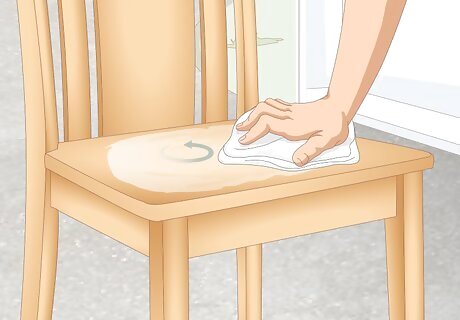
Buff the waxed furniture in circular motions for a shiny finish. Take a clean, wax-free cloth and gently rub the furniture until the wax coating shines. Keep working in circular motions across the entire surface of the furniture until the furniture is as lustrous as you like. You'll achieve a shinier finish by using a really soft cloth. In addition to using soft cotton cloths, you could use a terry cloth, an old T-shirt, or a cotton diaper. It doesn't matter if you buff with or against the grain of the furniture. You can also use a buffer drill attachment to buff the wax.
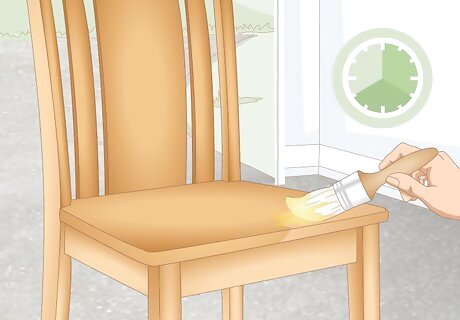
Wait at least 4 to 8 hours before applying a second layer of wax. If you're covering painted furniture, you may not want to apply another coat, which could make the furniture even shinier. If you're covering unfinished furniture, plan on applying a total of 3 layers, but remember to buff the wax between each application. Once you finish waxing and buffing the furniture, wait about 30 minutes before placing things on the furniture or using it.
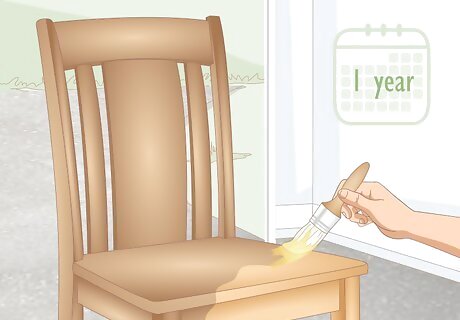
Apply a new coat of wax 1 to 2 times a year. You'll notice that the furniture becomes shiny when you dust it throughout the week. Once you see that the furniture isn't buffing to a shine, it's time to apply a new coat of wax. Follow the same steps to cover the furniture with wax. Wax gradually wears off and oxidizes over time, which is why you have to reapply it.




















Comments
0 comment